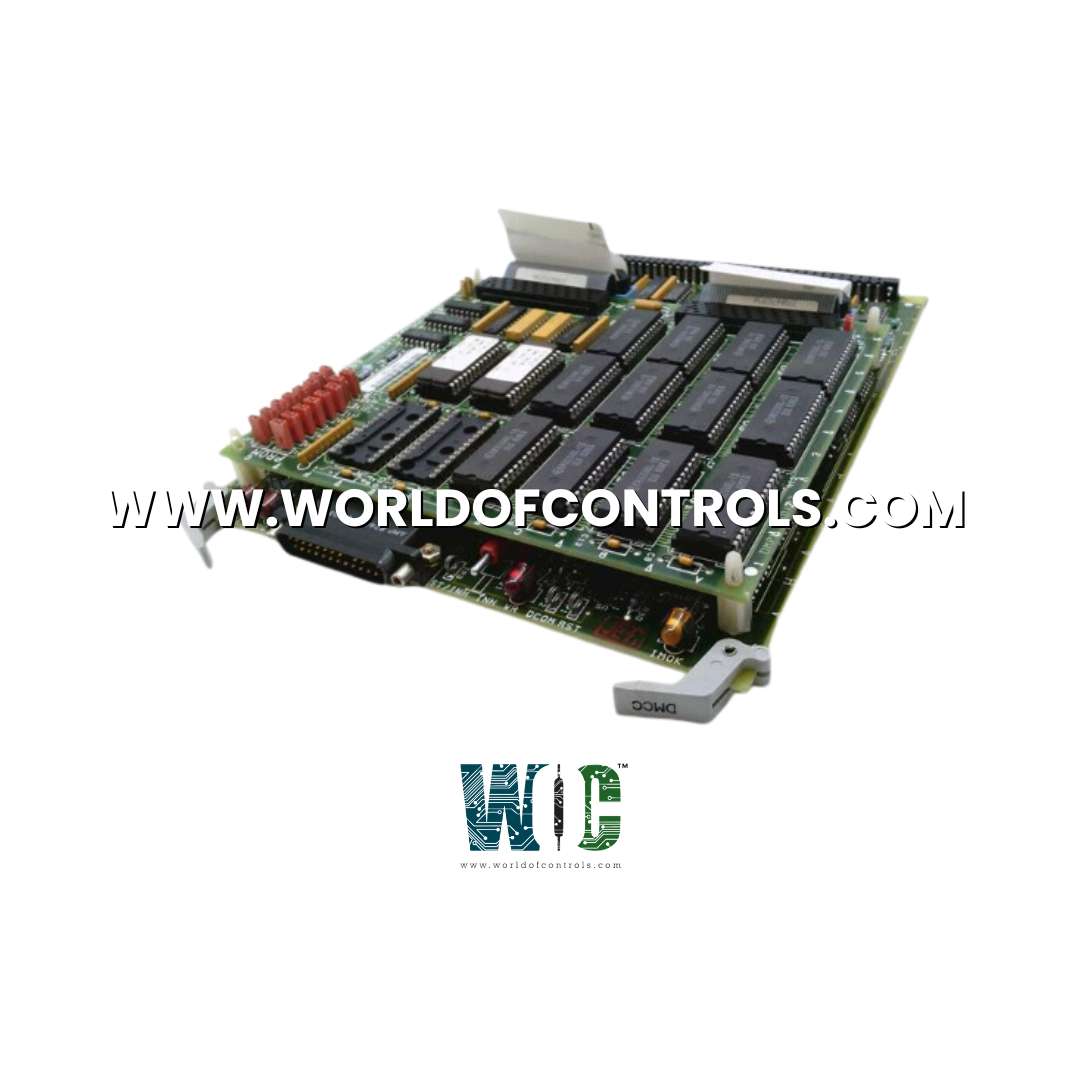
World Of Controls understands the criticality of your requirement and works towards reducing the lead time as much as possible.
DS3815DMCC - Distributed Micro Control Card is available in stock which ships the same day.
DS3815DMCC - Distributed Micro Control Card comes in UNUSED as well as REBUILT condition.
To avail our best deals for DS3815DMCC - Distributed Micro Control Card, contact us and we will get back to you within 24 hours.
SPECIFICATIONS:
Part Number: DS3815DMCC
Manufacturer: General Electric
Series: Mark IV
Product Type: Distributed Micro Control Card
Power Supply: 24V DC
Input Channels: 8 to 32
Processor: Multi-core ARM Cortex-A series
Data Buffer Capacity: 256 KB � 2 MB
Clock Speed: 800 MHz - 2.5 GHz
Operating Temperature: -40�C to +85�C
Mounting Type: DIN Rail
Board Size: 33.0 cm high x 17.8 cm
Repair: 3-7 Days
Availability: In Stock
Country of Origin: United States
FUNCTIONAL DESCRIPTION:
DS3815DMCC is a Distributed Micro Control Card manufactured and designed by General Electric as part of the Mark IV Series used in GE Speedtronic Gas Turbine Control Systems. The Distributed Micro Control Card (DMCC) is a microprocessor-based module designed to perform high-speed, real-time control functions within turbine control systems. It acquires analog and digital signals from field devices, executes embedded control algorithms, and generates precise output commands to actuators. The card interfaces with the system backplane and communication networks to coordinate with other control and I/O modules, supporting both simplex and triple modular redundant (TMR) architectures for fault-tolerant operation. Continuous internal diagnostics monitor processor performance, memory integrity, communication status, and I/O validity, ensuring reliable turbine operation under all conditions.
INSTALLATION:
The card should be carefully aligned with the keyed guides of the designated backplane slot and inserted evenly until fully seated, after which front panel screws are tightened to secure the module against vibration. All cabling and connector requirements must be followed according to system wiring diagrams, ensuring correct orientation, firm seating, and the use of strain reliefs to prevent mechanical stress on connections. Once installed, system power is restored, and onboard diagnostics and self-tests are executed to verify processor health, memory integrity, communication links, and I/O functionality. Status LEDs and diagnostic indicators should be monitored to confirm normal operation, and installation details such as serial number, slot location, and date should be recorded for maintenance tracking.
ADVANTAGES / KEY BENEFITS:
Its modular design allows for easy replacement and maintenance without extended system downtime. The card supports fault-tolerant and redundant operation, including simplex and triple modular redundant (TMR) architectures, minimizing the risk of single-point failures. It delivers high-speed deterministic processing, ensuring precise execution of control algorithms and real-time response to field inputs. Additionally, continuous onboard diagnostics monitor processor performance, memory integrity, communication links, and I/O status, providing proactive detection of faults and ensuring reliable system operation under all conditions.
WOC maintains the largest inventory of replacement parts for GE Speedtronic control systems, including unused, rebuilt, and warranty-backed modules. We provide board repair services for damaged components, ensuring restoration to OEM standards. Our team of professionals is available 24/7 to support all your automation and OEM requirements. For pricing, availability, or technical assistance, please contact our team by phone or email to ensure seamless support and quick resolution of your needs.
What is the function of the DMCC?
The DMCC is a microprocessor-based module responsible for high-speed acquisition of analog and digital signals, execution of embedded control algorithms, and generation of precise output commands for actuators in turbine control systems.
How does the DMCC communicate with other system modules?
Communication occurs via the system backplane and networked interfaces, ensuring real-time data exchange and synchronization with other control and I/O modules.
How does the DMCC communicate with other system modules?
Communication occurs via the system backplane and networked interfaces, ensuring real-time data exchange and synchronization with other control and I/O modules.